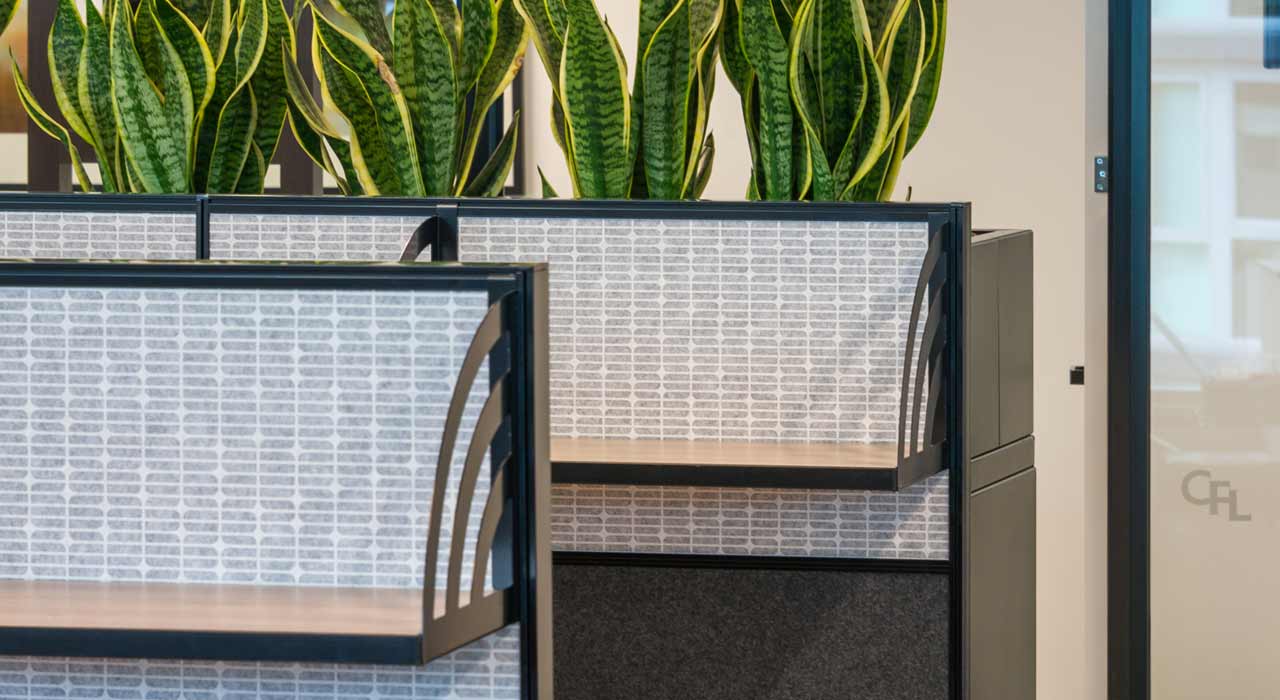How to Use Greenery In Your Decorative Acoustics?
What is Acoustic Greenery?
In homes, offices, and public places, using greenery in acoustic treatments contributes to calmer, quieter surroundings. Foliage panels, greenery tiles, and artificial greenery offer easy and aesthetically pleasing options to incorporate environmentally friendly decor into your acoustics.
Incorporating custom greenery acoustics in your space isn’t just about sound control: it’s about creating an inviting environment that merges functionality and design with nature and noise control.
Different Types of Acoustic Greenery Solutions
You’ll find plenty of choices when searching for acoustic options! Some eco-friendly solutions include foliage panels, greenery tiles, fake plant decor, baffles, and rugs. Each of these provides a unique aesthetic, catering to diverse design preferences. They open up various ways to introduce greenery acoustics into your spaces.
- Foliage Panels: A popular choice, acoustic foliage panels consist of densely packed plant leaves. They contribute significantly to sound absorption due to the high leaf density. Apart from their acoustic benefits, foliage panels can convert a dull wall into a vibrant, visually pleasing greenery wall.
- Greenery Tiles: Greenery tiles, smaller in size, allow for more flexible placement. Used frequently in arrangements on walls or ceilings, they can form a stunning hanging greenery ceiling that enhances both aesthetics and acoustic quality.
- Fake Plant Decor: If maintenance is a concern, fake plant decor—composed of artificial greenery—becomes an attractive option. While looking like real plants, these offer the dual advantage of long-lasting beauty and efficient sound absorption.
What are the Benefits of Using Greenery for Decorative Acoustics?
Integrating greenery into decorative acoustics offers multiple benefits, including environmental, acoustic, and emotional advantages. Here’s why you should consider adding green elements to your acoustic design.
Environmental Benefits
Foliage panels and greenery tiles enhance the visual appeal by bringing a touch of nature indoors. These artificial green features provide the aesthetics of nature without the maintenance real plants require. Additionally, eco-friendly acoustics and fake plant decor contribute to creating a soothing and pleasant indoor environment.
Acoustic Benefits
More than just eye candy, greenery offers acoustic advantages rooted in sound absorption. Incorporating elements like hanging plants and installing sustainable acoustic panels into your surroundings absorb sound waves, reducing ambient noise levels. For both natural and artificial greenery, their structures serve to scatter and absorb sound, managing echo and reducing unwanted noise. It’s not merely a case of turning your space green; it’s about tapping into nature’s innate acoustic properties for quieter interactions.

Emotional/Calming Benefits
The calming influence of greenery aids in reducing stress, encouraging relaxation, and fostering an increased sense of well-being. Whether it’s the sight of a greenery on the wall, the crisp freshness of a foliage panel, or the subtle sway of hanging plants, greenery aids in creating a tranquil surrounding that promotes focus and productivity.
Acoustic Greenery in Design
Transform your environment by integrating greenery acoustics into your design strategy. This eco-friendly tactic infuses life into spaces and utilizes the acoustic benefits of plants. From acoustic panels enrobed in foliage to greenery wall and ceiling tiles, the incorporation of living elements produces a double-edge triumph— sound absorption and visual appeal.
Get creative with fake plant decor or hanging greenery ceiling solutions that augment your space’s acoustic performance while maintaining a green aesthetic. You’ll enjoy the convenience of minimal maintenance without compromising on aesthetic value and acoustic function.
Selecting the right plants is critical for effective greenery acoustics. Opt for species known for their ability to absorb sound. Monsteras and snake plants, for instance, are renowned for their sound-absorbing characteristics.
There’s no limit to the inventive ways to incorporate hanging plants into your spaces. Position them strategically around your home or office to benefit from their sound-absorbing qualities and aesthetic appeal.

Differences Between Greenery & Plants
Drawing a line between greenery and plants might seem straightforward. After all, aren’t they essentially the same?
Greenery, in this context, refers specifically to plants used in acoustic applications. Various forms exist including artificial greenery, greenery panels, and foliage panels. Constructed to optimize acoustic functionality, these decorative panels and tiles soak up unwanted ambient sound to create a peaceful environment.
On the other side, plants typically serve as purely ornamental additions to spaces. Though they certainly brighten interiors with their vibrant colors, plants often remain underutilized as acoustic tools. Examples of these are generic office plants or simple home flora that individuals use to breathe life into their environment. Unlike acoustic greenery, plants typically receive attention for their aesthetic value rather than any clear acoustic benefits.
Next time you’re designing or redecorating a space, consider going beyond the occasional potted plant to explore the benefits of greenery acoustics.
Using Greenery in Acoustic Decor
By choosing greenery for your acoustic panels and sustainable tiles that can be applied to an accent wall or ceiling, you’re not only enhancing the look of your space but also improving its acoustic performance. Together with your design, you’re creating an indoor environment that’s visually pleasing and acoustically efficient. Embrace the power of using greenery in your acoustic decor and experience the difference – get in touch with us today to learn more about how incorporating greenery into your space can improve sound quality!



